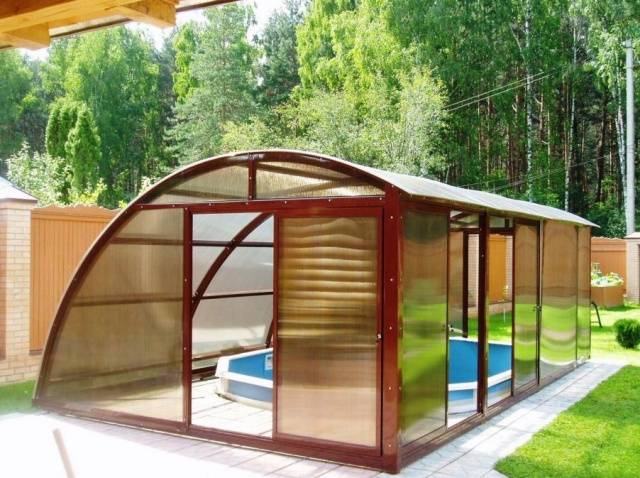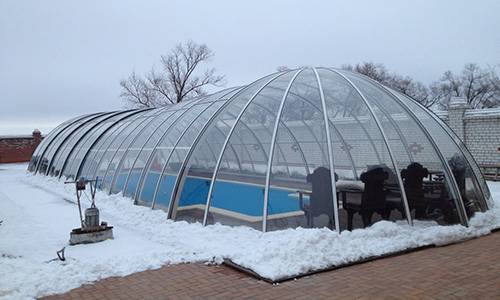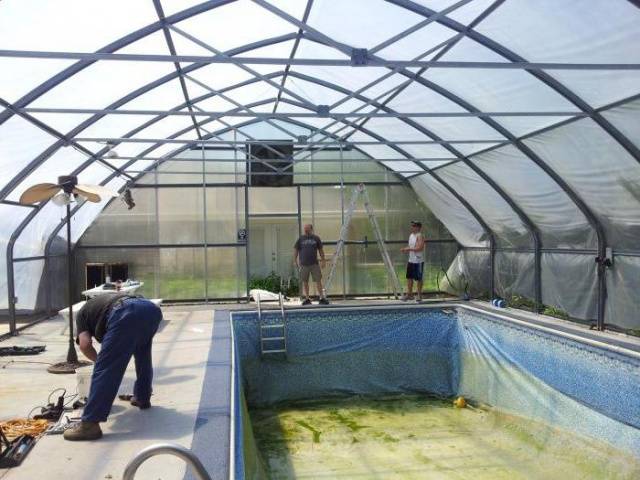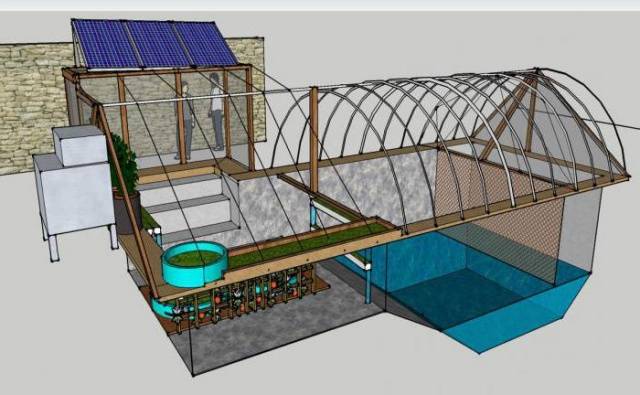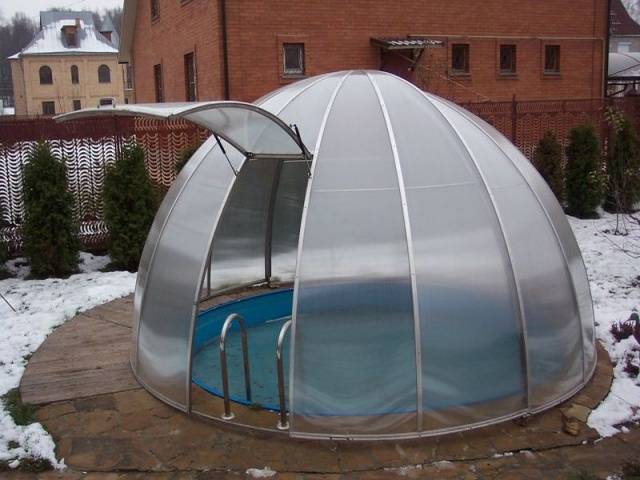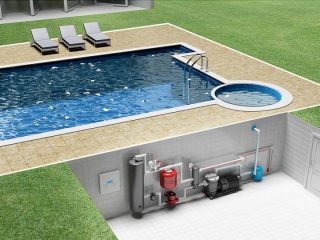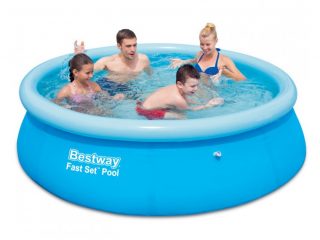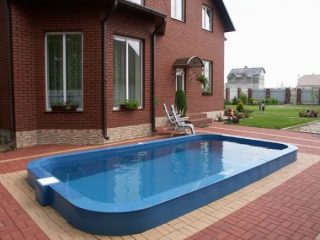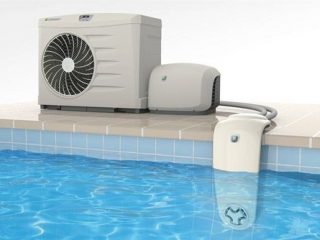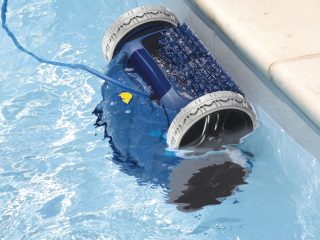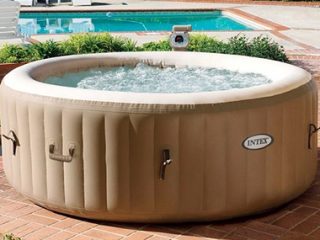Content
An outdoor pool is a great place to relax. However, with the onset of cold weather, the swimming season ends. Another disadvantage of an open font is that it quickly becomes clogged with dust, leaves and other debris. If you build a swimming pool in a greenhouse at your dacha, the closed bowl will be protected from the harmful effects of the natural environment, and the swimming season can be extended until the onset of frost.
Types of hot tub greenhouses
Traditionally equip at the dacha, the pool is in a polycarbonate greenhouse, but determining the type of structure is not limited to the choice of covering material. Due to the large amount of evaporation inside the building, a high level of humidity is constantly maintained. Not every material is suitable for a greenhouse frame. The wood will quickly rot, and the ferrous metal will be destroyed by corrosion. To create a skeleton, stainless steel, aluminum, galvanized or polymer-coated steel are suitable.
The next important choice is the shape. In addition to aesthetics, a hot tub greenhouse must withstand wind loads and large amounts of precipitation.
A beautiful and durable swimming pool in a dacha in a greenhouse will have the following shapes:
- Arch. The roof of a semicircular design is easy to manufacture, since polycarbonate bends easily. Snow slides off slopes. The arch is resistant to strong gusts of wind.
- Dome. Greenhouses of this shape are built over round fonts. The design is difficult to manufacture and consumes a lot of material.
- One or two stingrays. The simplest version of a greenhouse for a hot tub with smooth walls is easy to construct. However, the polycarbonate structure is weakly stable and is susceptible to strong winds and heavy rainfall. The option with one slope is not suitable for snowy regions.
- Asymmetrical shape. Typically, these pool greenhouses consist of a flat wall that turns into a large semicircle. A polycarbonate building is difficult to manufacture and requires proper positioning relative to the frequent wind direction.
The choice of the shape of the polycarbonate shelter depends on the size of the pool, as well as how many people the recreation area is designed for.
The dimensions of the greenhouse are:
- Low. The polycarbonate structure is intended only to protect water from clogging, acting as a cover. Folding tops are often installed over small pools, and large swimming pools are equipped with a sliding system.
- High. Looking at the photo of a swimming pool in a polycarbonate greenhouse, we can confidently call the structure a real place of relaxation. Inside, under a transparent dome, folding furniture is placed, decorative greenery is planted, and heating is provided.
Tall greenhouses covered with polycarbonate are equipped with wide doors. The sashes are made sliding, with a lift-up or hinged.
Advantages of indoor hot tubs
A pool with a polycarbonate cover has many advantages:
- Polycarbonate and metal profiles for the frame are considered environmentally friendly materials. Chemical odors from heating the structure under the sun will not accumulate inside the greenhouse.
- A polycarbonate pool cover is durable and lightweight. If necessary, it can be moved to another place.
- Polycarbonate is resistant to aggressive weather conditions.
- A greenhouse effect is created inside the greenhouse. The intensity of water evaporation from the pool is reduced, and the risk of proliferation of harmful microflora is reduced. The hot tub under a polycarbonate dome is protected from contamination by debris.
- Lightweight materials are convenient when constructing a shelter yourself.
- The polycarbonate pavilion has good light transmission. The material is inexpensive and can last up to 10 years.
- The pool under the shelter will be kept clean at all times. Rust will not fall off the stainless profile, and contaminated polycarbonate can be easily wiped off with a rag.
Among the shortcomings, one point can be highlighted. Polycarbonate is afraid of strong mechanical influences. To prevent the shelter from being damaged by falling branches, the pool is not located under trees.
Choosing a hot tub type and installation methods
If we briefly consider how to make a pool in a polycarbonate greenhouse, the work begins with choosing the size. The font should be enough for all family members to visit at the same time. Depending on the type of installation, bowls can be recessed, partially dug in, or installed on the surface. The latter type includes a frame pool in a polycarbonate greenhouse or a small inflatable bowl. A completely recessed font is considered the most reliable.At the dacha, you can make a bowl under a dome from two types of polycarbonate:
- The reinforced concrete font is poured directly inside the pit. At the bottom of the pit, a cushion of sand and crushed stone is poured and a reinforcing mesh is laid. First, pour the bottom of the bowl out of the solution. After the concrete has hardened, formwork is installed to fill the walls. The finished bowl is sprinkled with soil on the outside, and the inside is tiled, painted or subjected to other finishing.
- You can buy a ready-made polypropylene bowl, but it is expensive. It is better to solder the pool yourself from sheets polypropylene. A pit is dug for the bowl and the bottom is concreted. Sheets of thermal insulation made of expanded polystyrene are laid on top of the frozen slab. Polypropylene is welded with a special soldering iron - an extruder. First, the bottom of the pool is formed from the sheets, then the sides, and finally the stiffening ribs are soldered. The outside of the bowl is insulated with polystyrene foam, and the gap between the sides and walls of the pit is filled with concrete.
Of the two options, a polypropylene pool is considered the better option. The bowl does not accumulate silt, is easy to clean, and retains heat for a long time.
Important! Concreting the walls to strengthen the sides of a polypropylene pool is carried out simultaneously with filling the bowl with water. By equalizing the pressure difference, it is possible to avoid the formation of deflections in the font.
Installation of a hot tub greenhouse
When the pool in the greenhouse is completed with your own hands, they begin to build the greenhouse. Construction work consists of the following steps:
- An area is marked around the pool. Pegs are driven in around the perimeter, and a construction cord is pulled between them.
- According to the markings, a ditch is dug to a depth of 25 cm. Fertile soil is sent to the beds.Under the sliding low greenhouse, a concrete strip is poured around the entire perimeter. The posts of a stationary greenhouse can be fixed to a columnar foundation. In the second option, at the site where the frame supports are installed, recesses are dug for pouring concrete pillars.
- Formwork is built from boards. A reinforcing frame with welded metal embedded parts is installed inside. The elements must protrude onto the surface of the foundation. The racks or main guides of the greenhouse frame will be fixed to the mortgages. The foundation is poured with concrete mortar in one day.
- Further work continues after at least 10 days. The formwork is removed from the foundation. The area adjacent to the pool is covered with crushed stone and sand. After installing the polycarbonate shelter, paving slabs will be laid around the bowl.
- The frame is assembled using welding or bolts. In the first case, all joints are painted. Welding burns the protective coating of zinc or polymer. Aluminum profiles are connected with bolts. Stainless steel is not afraid of welding. The joints can only be sanded with a grinder.
- A sealant is glued to the outside of the greenhouse frame. Holes are drilled in the polycarbonate sheets and profile. The cut material is placed on the frame, secured with special clips with thermal washers. The joints are hidden under the connecting profile.
After the construction of the greenhouse is completed, lighting is provided inside, furniture is installed, and flowers are planted in flowerpots.
The video shows a country pool in a greenhouse:
Arrangement of a swimming pool for year-round recreation
The heat inside the polycarbonate dome is retained until the onset of extreme cold. During the day, the area around the pool and the water will be warmed by the sun. At night, some of the heat will be given off to the ground.With the arrival of the first frosts, there is little natural heating. For year-round use, artificial heating is installed. The system must meet safety requirements, since a high level of humidity is always maintained under the dome.
A DIY swimming pool built in a polycarbonate greenhouse at the dacha will become a decoration of the yard and a favorite vacation spot for all family members.
